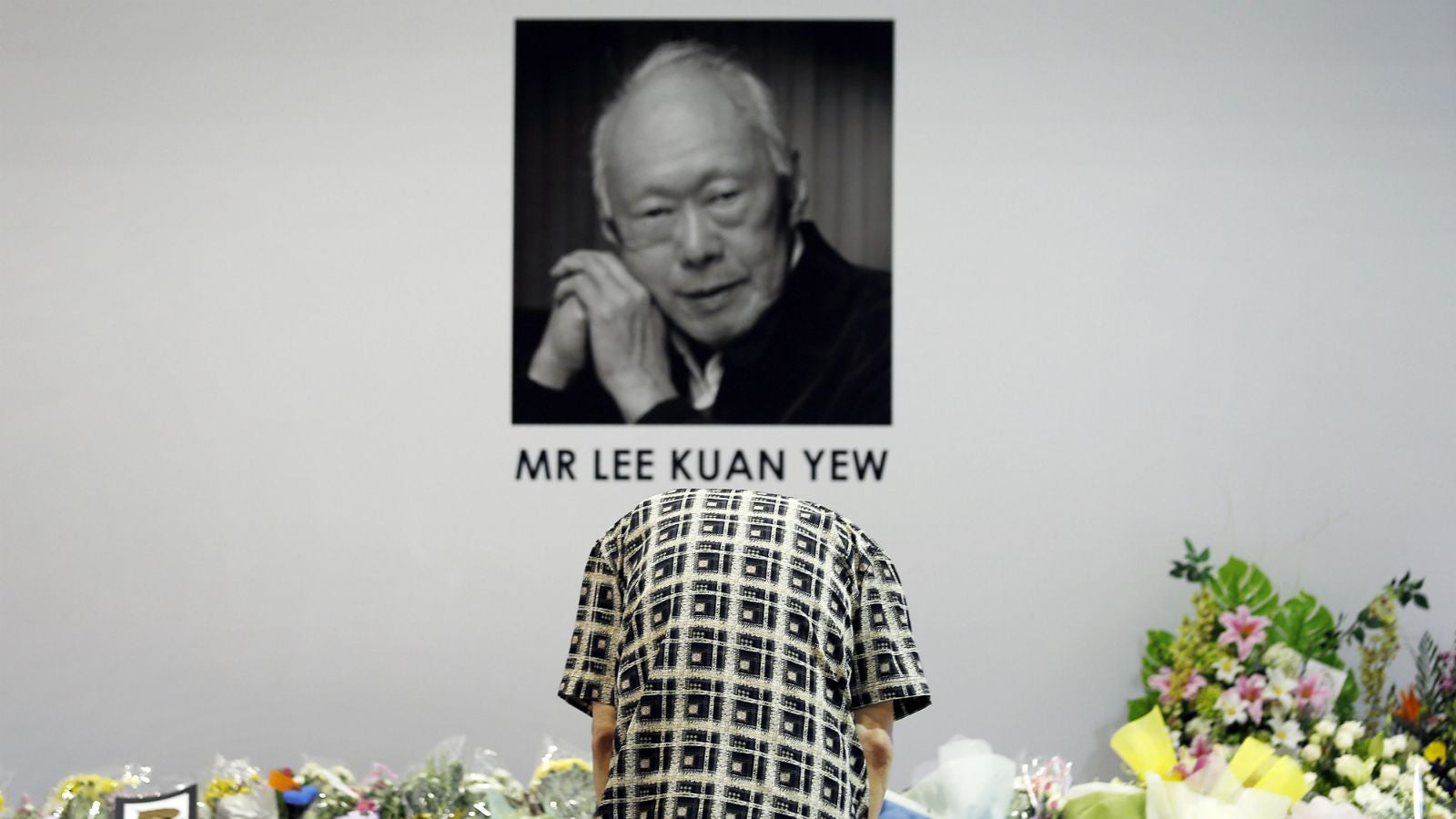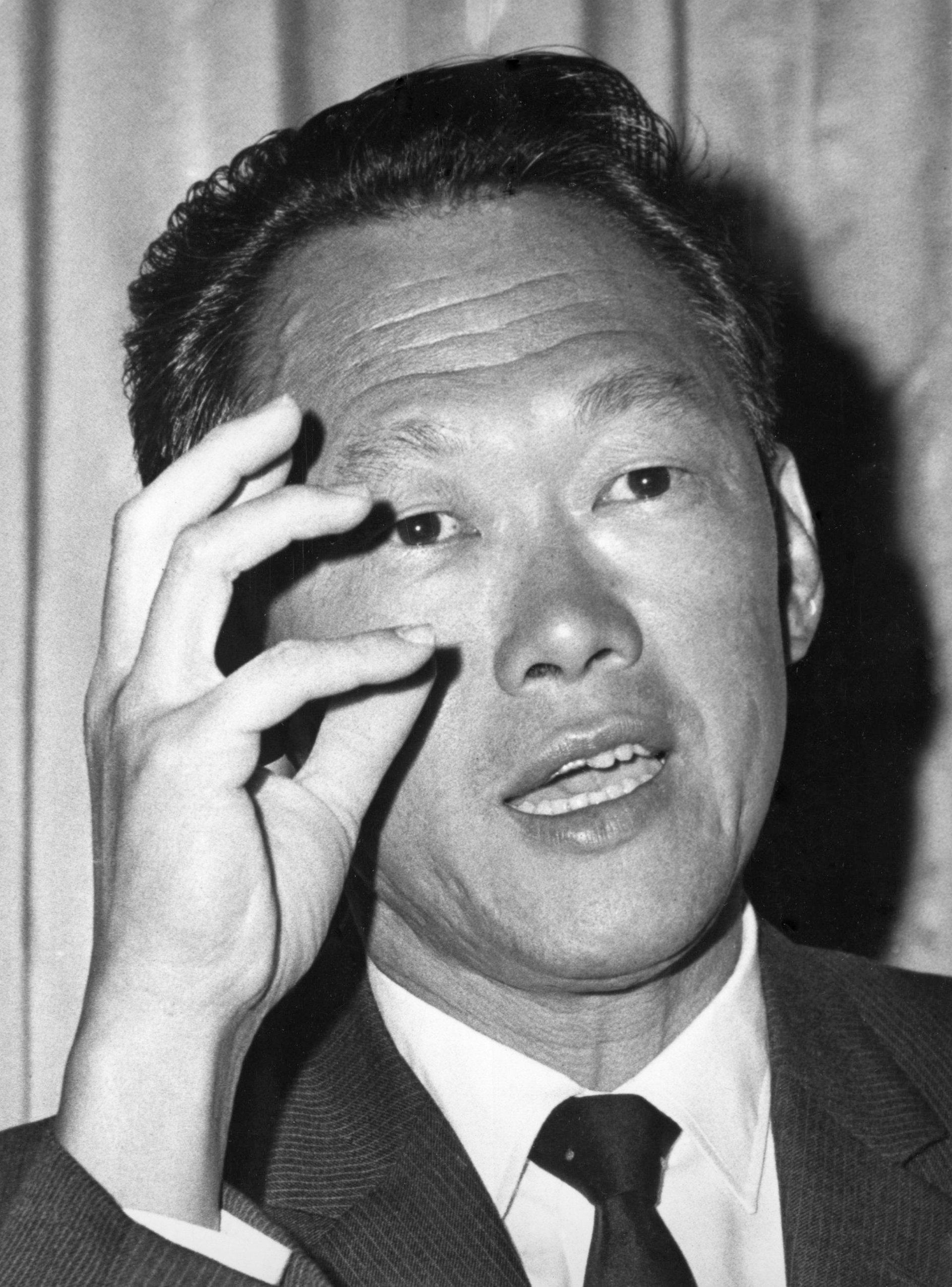What businesses can learn from Lee Kuan Yew, the man who built modern Singapore
I first came to live in Singapore twenty five years ago. Though I didn’t have the privilege of meeting late prime minister Lee Kuan Yew till many years later, he became my hero very early on. I marvelled at someone who could marry the vision and big picture thinking that he had with the attention to detail and the ability to execute that he personified. I was struck by his courage and his determination, his tenacity and his endurance. I was overwhelmed by the economic wonder—Singapore—he had created.


I first came to live in Singapore twenty five years ago. Though I didn’t have the privilege of meeting late prime minister Lee Kuan Yew till many years later, he became my hero very early on. I marvelled at someone who could marry the vision and big picture thinking that he had with the attention to detail and the ability to execute that he personified. I was struck by his courage and his determination, his tenacity and his endurance. I was overwhelmed by the economic wonder—Singapore—he had created.
His passing saw an entire nation come together, united in its grief at the loss of a great man who transformed this little island state from third world to first. This caused me to also pause and reflect upon the lessons that he has left behind for us. It’s often said that he ran Singapore like a CEO runs a company, and in many ways (though not entirely), I think that was true. And as I gave it some thought, I came up with the following observations that may be useful for any corporate manager. This is by no means meant to be an evaluation of the man or his achievements, merely some reflections on what the business sector could learn from some of his principles.
Have a strong sense of purpose

Lee had an extraordinary sense of purpose. He lived and breathed Singapore. The success of Singapore and the future of its people were the singular lodestar of his actions. If it was good for Singapore, for its people, then it must be the right thing to do. He did not pander to populist desires, and if he believed in something, he left no stone unturned in his pursuit of it.
In some ways, I think that creating a unified sense of purpose is one of the most important things that a good business leader needs to do. Consultants will call this the “vision/mission” thing. Unfortunately, most mission statements lack a key attribute: simplicity. The power of a statement of purpose is that it should align the organisation in a common direction, and that it should serve as a rubric for decision making. For this to be true, it needs to be simple enough so that everyone in the organisation “gets it,” and so that each person can have line of sight between what he/she does and what the purpose of the company is.
Have a simple but differentiated strategy
When Singapore was thrust into independence in 1965, few expected it to thrive. This was a city state, smaller than New York and London, which was disadvantaged in many ways. Singapore has no hinterland, no natural resources, and its citizens consisted of a hodgepodge of migrants. Industry was nascent, unemployment was high and the labour force restive.
For this tiny red dot to be relevant, it had to be different. Singapore’s pioneering leaders achieved this by pursuing a simple strategy of differentiation—that is, delivering a first-world infrastructure, both hard and soft, in a third-world region, thus making it attractive to global investment. In hindsight, no rocket science. However, in the climate of the day (nationalistic agendas in the post-colonial world, import substitution rather than export orientation etc), totally contrarian!
For business leaders, the lesson is instructive—good strategies don’t have to be overly complex; however, they should be differentiating. I often think of strategy as having to answer two questions: what game do you want to play, and how will you differentiate (or why will people come to you)? At DBS, we articulated our strategy over the past few years in six bullet points on a single page.
To create a differentiating strategy, you must have a point of view on the future. This does not mean that you have to forecast everything that is going to happen. Frankly, this is almost impossible. In 1994, when I was developing Emerging Market strategy for Citigroup, we tried to forecast what would happen to the world by the year 2000. In 2000, I had an opportunity to review my notes, and was struck by the fact that despite the help of world class futurologists, we got precious little right! Nevertheless, you have to make some reasoned bets on what the mega trends are, and where the world is going. Lee understood that, and generally got it right!
Create strong alignment

An extraordinary achievement of Lee was his ability to galvanise a diverse group of migrants from different races and backgrounds, and to create a sense of oneness among them. Around the world, the human tendency is for people with similar backgrounds to group together with one another. With Singapore being a multi-racial society, how could an environment be created such that different groups live harmoniously together? Singapore uniquely achieved this through social strategy—through a residential experiment. With 85% of Singaporeans living in public housing, the government ensured from early on that each block of flats, each precinct, has an ethnic balance. This helped to break down walls of mistrust between the different races.
Creating a sense of oneness, or alignment, is also important in the business world. Too often, schisms between business units and across front/back office functions lead to people working for their own end, rather than putting the company first. Eliminating this requires thoughtful and unconventional techniques.
At DBS, we spent time developing a management construct (enshrined in a document called Rules of the Road) that established clear norms for decision making. We live by a balanced scorecard, where key performance indicators (KPIs) are shared and so is evaluation at the top of the house.
Unlike most financial firms, we don’t believe in paying back office and middle office people on a lower scale than the front office. We have embraced techniques like “Obeya” workshops and “Agile tech development” so that all stakeholders can come together and collaborate on projects, rather than rely on traditional waterfall methods with various hand-offs. The new world of internet and social media allows us to harness the best of our employees, and creates a mechanism that encourages a cross-fertilisation of ideas. We have even tried to encourage collaboration by creating open-concept workspaces, as well as common spaces where our people can mingle, exchange ideas, and develop better solutions for our customers.
Groom a pipeline of talent
Lee was committed to building a meritocratic society. He believed in getting the right talent irrespective of source. Coupled with the country’s first-class educational system, this allowed Singaporeans of all backgrounds, race and religion, to rise up in society. He also believed in paying for performance, and this philosophy helped attract high-calibre officers into public service and the government.
It goes without saying that talent management should be central to the CEO agenda. Strong people engagement is key to any successful enterprise, and good leaders not only surround themselves with smart people, bring them along in their careers, but also ensure that they are suitably rewarded.
Execute in a disciplined manner
In Singapore, plans are made 10, 15, 20 years in advance, sometimes even more.
For example, to seal Singapore’s status as a premier air hub, plans for the country’s fifth airport terminal were unveiled in 2013, a good 12 years before the target completion date of 2025. The Marina Bay Financial Centre (MBFC), Singapore’s new financial downtown, where our headquarters is situated, was an open sea a few decades back. With the foresight of Lee, reclamation works were initiated back in the 1970s, before any need for this piece of prime real estate arose.
However, a lot of countries make 10 year plans and even longer. What made Singapore different was the ability to execute, and Lee’s extraordinary attention to detail was a key element behind this. For example, he would personally come and walk around the MBFC area to see how things were going over the many years of the project. He was famous as Singapore’s #1 gardener… on his various overseas trips, he would try and find which plants may be suitable for us, and personally bring them back!
This balance between “attention to detail” and “micro management” can be very difficult for a business leader. On the one hand, you want to give your people elbow room to perform. On the other hand, being too far removed from the details can be extremely expensive. I compromise by choosing each year the few “make or break” agendas that I personally need to be engaged with. On these matters, I am incredibly hands-on, including weekly meetings, skip level meetings, and detailed reviews. In other areas, I am happy to let go.
Lee was by no means perfect. However, the outcomes he left behind speak for themselves. His legacy lives on, all around us. If we in business can learn something from his methods and techniques, we will be much the better for it.
This post first appeared on LinkedIn. We welcome your comments at [email protected].